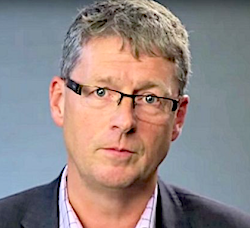 BT has trialed a new hyper-sensitive quantum radio receiver to boost next-gen 5G & IoT networks.
BT has trialed a new hyper-sensitive quantum radio receiver to boost next-gen 5G & IoT networks.
The technology uses ‘excited atoms’ to deliver over 100x greater sensitivity than traditional receivers.
Atomic Radio Frequency (RF) receiver technology is a new way of detecting radio waves that could find much weaker signals than conventional receivers.
The atomic receiver has the potential to reduce mobile network energy consumption, enable IoT cost efficiencies and help to close the rural connectivity divide.
The receiver works by using a quantum effect called electromagnetically induced transparency to form a highly sensitive electric field detector.
BT’s trial represents the first time a digitally-encoded message has been received on a 3.6GHz (5G) carrier frequency.
Previously, simple audio has been received using much higher frequencies but this trial is the first industrial demonstration using digital modulation within one of EE’s main commercial 5G frequency ranges.
This new type of receiver may reduce mobile network energy consumption, enable IoT devices to become more cost efficient and longer lasting and support lower-cost smart cities and smart agriculture.
The atomic RF Receiver can be positioned in a passive optical receiver in hard-to-reach locations, potentially bringing mobile networks closer to achieving 100% coverage and helping to close the connectivity divide.
While the technology is still in the early stages, it has the potential to provide greater sensitivity than conventional radio antennas, tuneable operation from very low frequencies, detection of analogue and digital modulation, and low energy consumption through reduced need for electronics.
The new technology could in future form the basis of ultra-sensitive 5G receivers for use in very low power passive mobile networks.
Researchers at BT Labs in Martlesham are now working to miniaturise the equipment and find the optimum RF modulation and signal processing for potential use in future generations of radio networks.
Howard Watson, Chief Technology Officer, BT said: “Our programme has huge potential to boost the performance of our next generation EE network. Although it’s early days for the technology, we’re playing an instrumental role in developing cutting edge science."
BT has also secured a number of patents related to the implementation of the atomic RF receiver.
